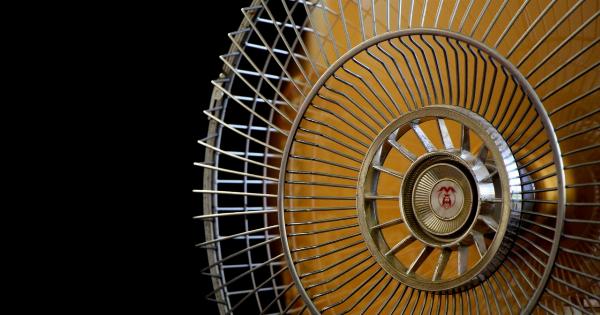When it comes to household chores, washing clothes is one task that requires regular attention. However, we often overlook a tiny but crucial component that plays a vital role in the washing process – the washer.
This oversight can lead to inefficiencies, increased energy consumption, and even potential damage to your clothes. In this article, we will explore the oversight you might have with your washer and its impact on your laundry routine.
1. The Importance of Regular Maintenance
Maintaining your washer is essential to ensure optimal performance and prolong its lifespan. Neglecting regular maintenance can result in clogged hoses, mold growth, and wear and tear on parts.
It’s crucial to follow the manufacturer’s guidelines for maintenance, such as cleaning the washer drum, checking and cleaning the filters, and inspecting the hoses for any signs of damage or blockage.
2. Water Temperature Selection
One common oversight is the selection of water temperature for different types of clothing. Many of us tend to use hot water for all loads, assuming it will provide a better cleaning result.
However, certain fabrics and delicate items require a gentle touch and require cold or warm water instead. Not paying attention to the recommended water temperature for specific fabrics might cause clothes to shrink, fade, or lose their shape.
3. Proper Detergent Usage
Using the right detergent in the correct amount is crucial for maintaining the quality of your clothes and the efficiency of your washer. Using too much detergent can leave behind residues that might clog the washer and affect its performance.
On the other hand, using too little detergent might not provide adequate cleaning. It’s essential to read the detergent labels and measure the appropriate amount based on the load size and dirtiness of the clothes.
4. Sorting of Clothes
Sorting clothes based on their color, fabric, and level of dirtiness is a simple step that can often be overlooked. Failing to sort the clothes can result in color bleeding, lint transfer, or damage to delicate fabrics.
Take the time to separate whites, darks, delicates, and heavily soiled items to ensure an effective and safe washing cycle.
5. Overloading the Washer
While it might be tempting to stuff the washer to its maximum capacity to minimize the number of loads, overloading can be detrimental to both the washer and the clothes.
Overloading prevents proper agitation, inhibits detergent and water distribution, and can even cause excessive wear on the machine’s components. It’s crucial to follow the recommended load capacity guidelines provided by the manufacturer for optimal performance and to protect your clothes.
6. Regular Cleaning of the Washer Drum
A washing machine drum requires regular cleaning to prevent the buildup of detergent residue, fabric softener, and other dirt particles. Overlooking this cleaning step can lead to unpleasant odors and potential staining on future loads.
Cleaning the drum with a mixture of vinegar and water or using specialized cleaning products designed for washers can help maintain a fresh and odor-free environment for your clothes.
7. Addressing Leaks and Malfunctions
If you notice leaks or unusual noises coming from your washer, it’s crucial not to ignore them. Ignoring these signs can lead to more significant issues and potential damage to your home.
Addressing leaks promptly can prevent water damage and ensure the efficient functioning of the machine. For more complex malfunctions, it’s advisable to seek professional help to avoid further complications.
8. Energy Efficiency Considerations
The oversight of neglecting the energy efficiency of your washer can have long-term consequences on your utility bills and the environment.
Newer models offer various energy-saving features, such as load sensing, water level adjustment, and shorter cycle options. Considering these features and making conscious choices can save water, electricity, and money in the long run.
9. Proper Placement and Leveling
When setting up or relocating your washer, it’s crucial to pay attention to its placement and leveling. A washer that is not level can lead to excessive vibrations, noise, and potential damage.
Ensuring that the machine is correctly placed and leveled will provide a stable and efficient laundry experience.
10. Regular Re-evaluation of Habits
Lastly, it’s essential to regularly re-evaluate your laundry habits and address any oversights that may have become routine.
As technology advances and new techniques emerge, it’s vital to stay updated on the best practices to improve the efficiency and longevity of your washer. Keeping abreast of any changes in detergent formulations, water conservation techniques, and maintenance recommendations can help optimize your washing routine.






























